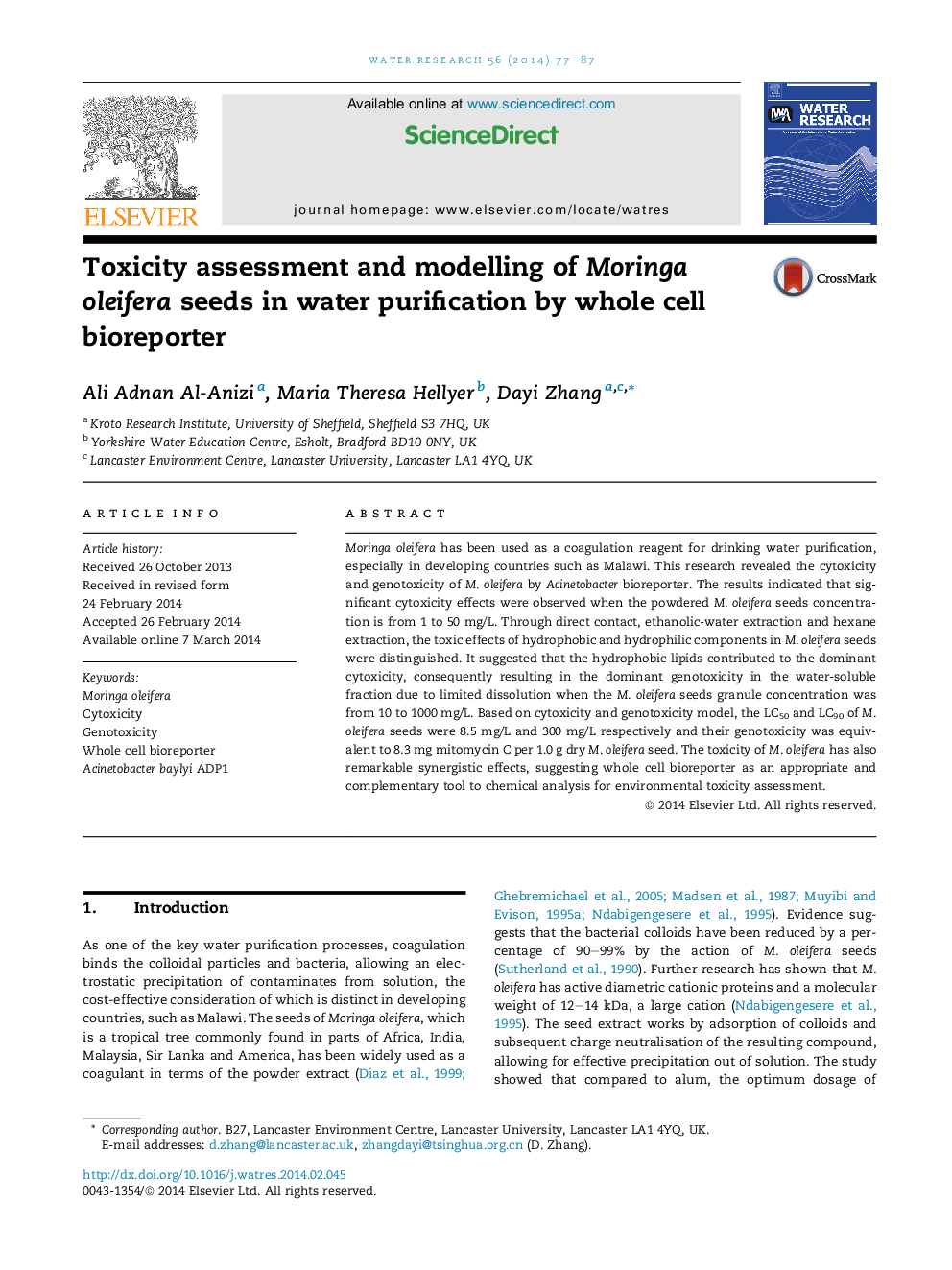| Article ID | Journal | Published Year | Pages | File Type |
|---|---|---|---|---|
| 6366876 | Water Research | 2014 | 11 Pages |
â¢We identified the significant toxicity effects of Moringa oleifera seeds.â¢The expose-response modelling of M. oleifera seeds in water purification.â¢The research distinguishes different toxic components and their mechanisms.â¢We reveal the risk of applying M. oleifera seeds in drinking water treatment.
Moringa oleifera has been used as a coagulation reagent for drinking water purification, especially in developing countries such as Malawi. This research revealed the cytoxicity and genotoxicity of M. oleifera by Acinetobacter bioreporter. The results indicated that significant cytoxicity effects were observed when the powdered M. oleifera seeds concentration is from 1Â to 50Â mg/L. Through direct contact, ethanolic-water extraction and hexane extraction, the toxic effects of hydrophobic and hydrophilic components in M. oleifera seeds were distinguished. It suggested that the hydrophobic lipids contributed to the dominant cytoxicity, consequently resulting in the dominant genotoxicity in the water-soluble fraction due to limited dissolution when the M. oleifera seeds granule concentration was from 10 to 1000Â mg/L. Based on cytoxicity and genotoxicity model, the LC50 and LC90 of M. oleifera seeds were 8.5Â mg/L and 300Â mg/L respectively and their genotoxicity was equivalent to 8.3Â mg mitomycin C per 1.0Â g dry M. oleifera seed. The toxicity of M. oleifera has also remarkable synergistic effects, suggesting whole cell bioreporter as an appropriate and complementary tool to chemical analysis for environmental toxicity assessment.
Graphical abstractDownload high-res image (137KB)Download full-size image
